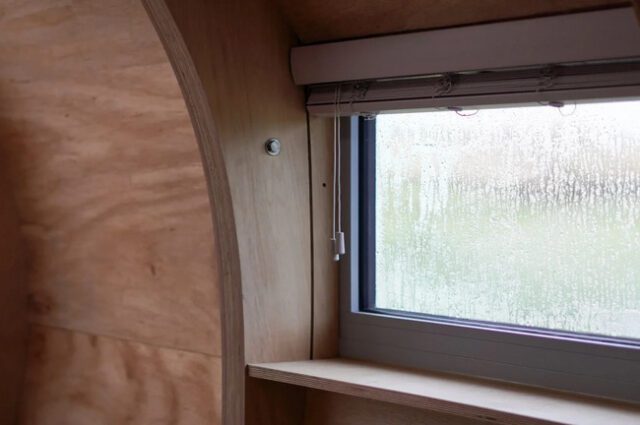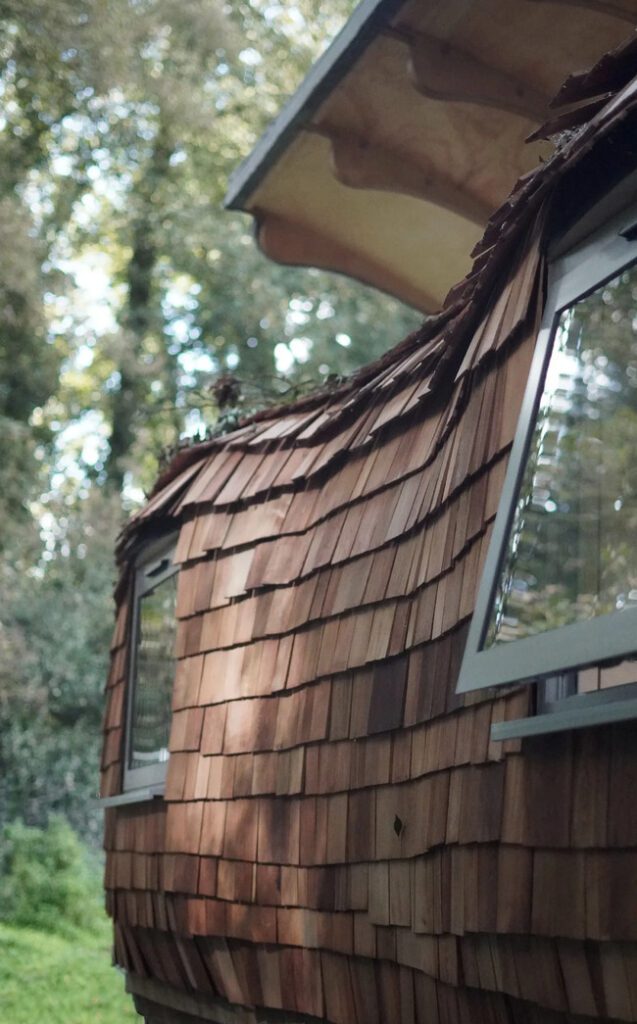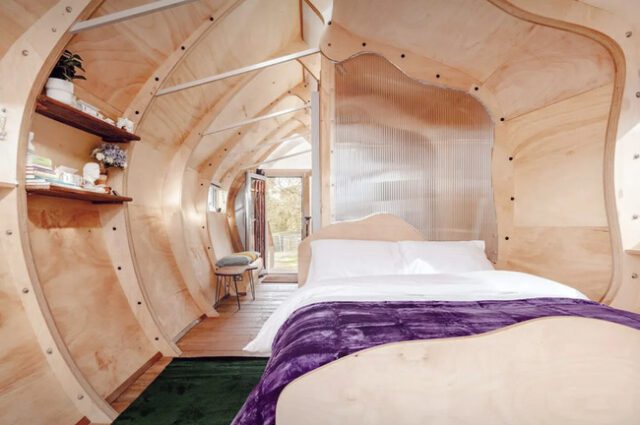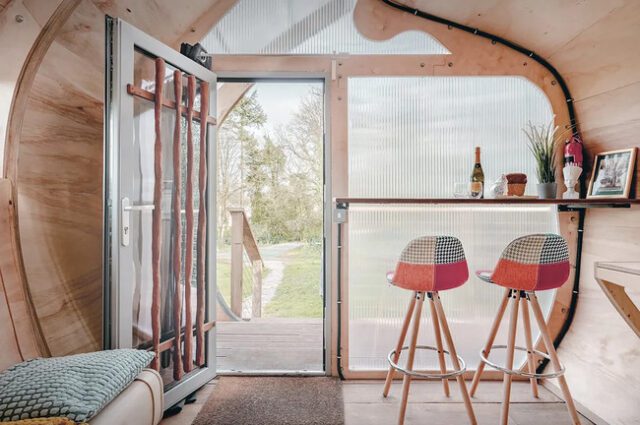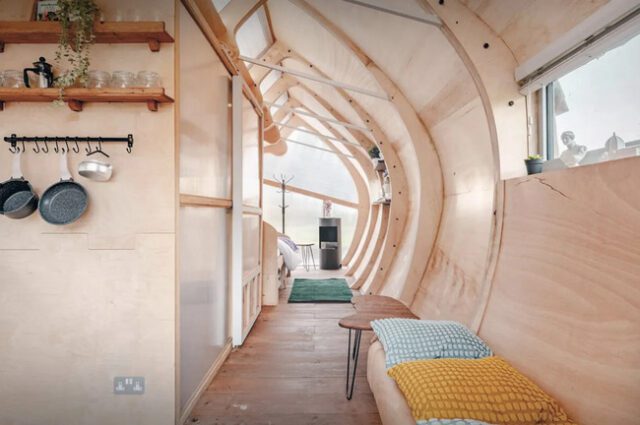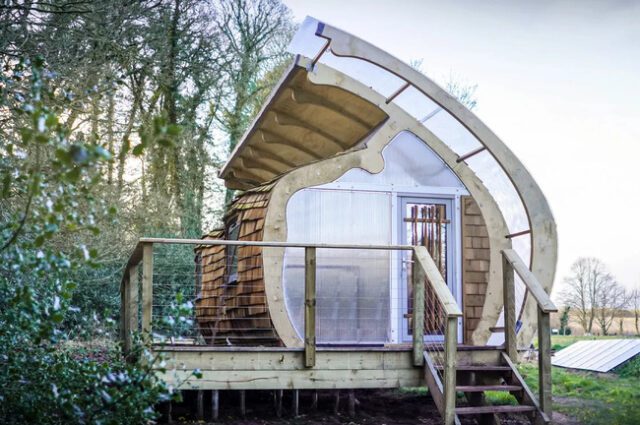
The Monocoque Cabin stands as a testament to the boundless creativity and ingenuity that can emerge from blending disparate inspirations. Drawing from the sleek monocoque structure of WWII aircraft, particularly the de Havilland Mosquito, British architect Peter Markos has fashioned a dwelling that transcends the conventional boundaries of tiny home design. This remarkable abode, born from Markos’ fascination with aerospace and automotive construction techniques, boasts a curving exterior reminiscent of its airborne muse, coupled with the resilience and efficiency of its monocoque design. Supported by the external skin akin to an eggshell, the Monocoque Cabin stands as a robust yet elegant retreat, harmoniously melding into its rural surroundings with a promise of longevity and grace as its timber materials weather over time.
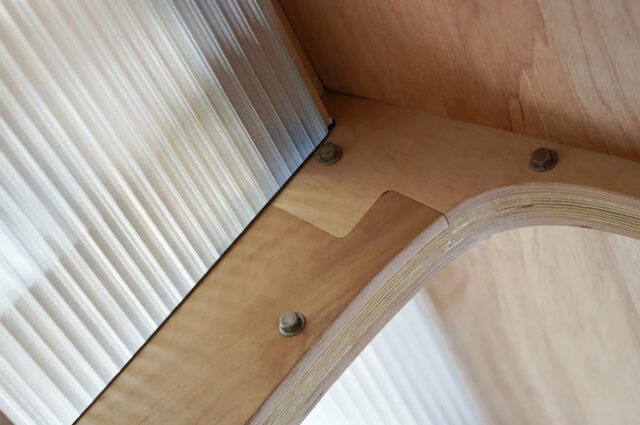
Beyond its striking exterior, the Monocoque Cabin offers a thoughtfully designed interior space that prioritizes both functionality and comfort within its compact dimensions. Stepping inside, one is greeted by a shared living room and kitchen area, adorned with simple yet tasteful furnishings that complement the home’s minimalist aesthetic. From the breakfast bar to the cozy sofa, every element has been carefully curated to maximize utility without sacrificing style. Seamlessly connected to this communal space lies a well-appointed bathroom and a spacious bedroom, offering all the essential comforts of modern living within the confines of its diminutive footprint. With its ability to run off-grid and the flexibility to be easily assembled and relocated, the Monocoque Cabin stands as a beacon of innovation, inviting us to rethink the possibilities of tiny home living in the modern age.
